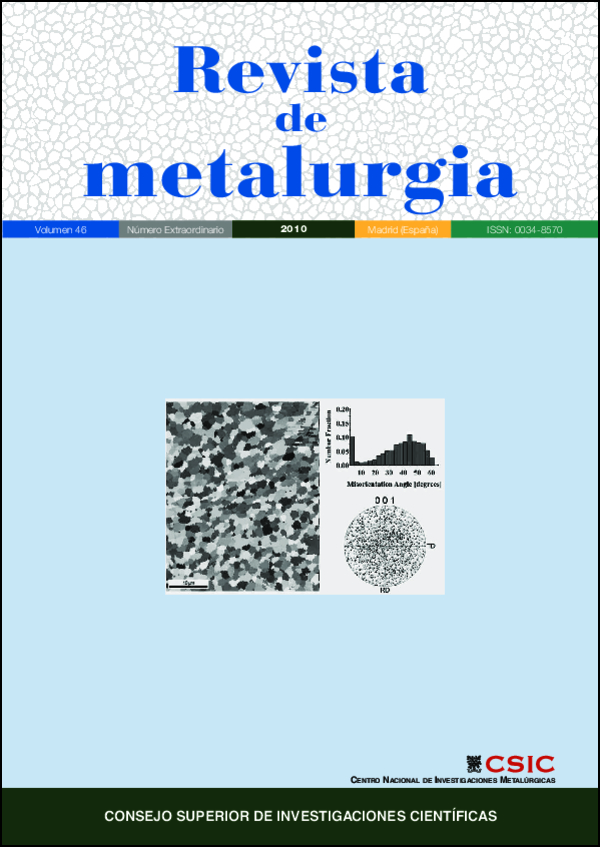Design of amould for the study of the relationship between thermal analysis results and microstructure of aluminium alloy A357 in investment casting
DOI:
https://doi.org/10.3989/revmetalmadrid.07XIIPMSKeywords:
Investment casting, Aluminium alloys, Mould design, Mechanical optimizationAbstract
Melt treatment of aluminium alloys is essential for optimizing their mechanical properties. Thermal analysis methods usually used as control are based on the cooling of the metal in metallic or sand cups. In investment casting, however, cooling takes place in a refractory mould at high temperatures (400-700 °C), where parts are characterized by thin thicknesses, so the results given by thermal analysis devices are not really representative of what happens in the parts. As a result of the present work a mould design is obtained, which adjusts itself to the typology of the parts in investment casting, and will make it possible to establish, in future trials, a relationship between thermal analysis results, microstructure in the part and final mechanical properties.
Downloads
References
[1] A. Loizaga, A. Niklas, A.I. Fernández-Calvo y J. Lacaze, Int. J. Cast Metals Res., 22 (2009) 345-352. doi:10.1179/174313309X380378
[2] G. K. Sigworth y T. A. Kuhn, AFS Trans. 07- 067 (2007) 31-40.
[3] S. Seifeddine, I. L. Svensson, 67th World Foundry Congress, Paper 200, Harrogate, Inglaterra, 2006.
[4] F. Chiesa, K. Durand y G. Morin, 11th World Conf. Investment Casting, Paper WC 11.13, Edinburgh, Inglaterra, 2004.
[5] J. Bäckman y I. L. Svensson, Research report, School of Engineering, Jönköping University, Sweden, 1999.
Downloads
Published
How to Cite
Issue
Section
License
Copyright (c) 2010 Consejo Superior de Investigaciones Científicas (CSIC)

This work is licensed under a Creative Commons Attribution 4.0 International License.
© CSIC. Manuscripts published in both the printed and online versions of this Journal are the property of Consejo Superior de Investigaciones Científicas, and quoting this source is a requirement for any partial or full reproduction.
All contents of this electronic edition, except where otherwise noted, are distributed under a “Creative Commons Attribution 4.0 International” (CC BY 4.0) License. You may read the basic information and the legal text of the license. The indication of the CC BY 4.0 License must be expressly stated in this way when necessary.
Self-archiving in repositories, personal webpages or similar, of any version other than the published by the Editor, is not allowed.
















